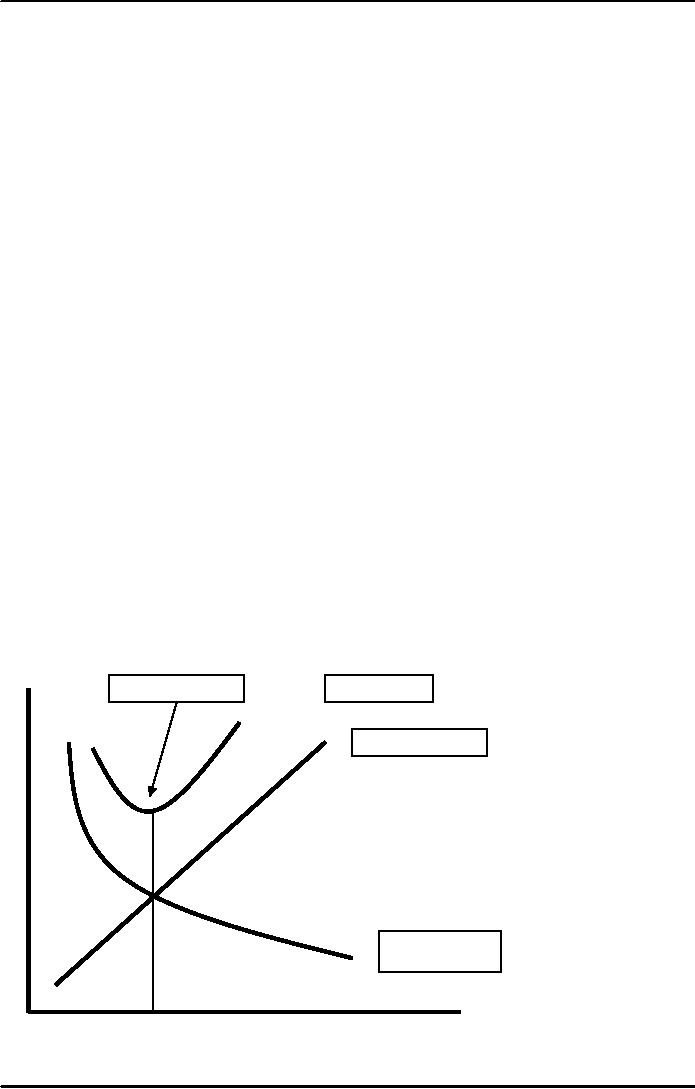 |

Corporate
Finance FIN 622
VU
Lesson
31
CREDIT
POLICY
In this hand
out we shall discuss the
following topics:
Cash
discounts
o Cost
of discount
o Shortening
average collection
period
Credit
instrument
Analyzing
credit policy
o Revenue
effect
o Cost
effect
o Cost
of debt
o Probability
of default
Evaluating
client worthiness
Optimal
credit policy
Collection
policy
One Example of
debtors management
Cash
Discounts:
Cash
discounts are offered by the
seller to buyer in order to improve
its operating cycle and this
involves
some
cost that is the discount cost of
receiving early payment. This discount is
conditional subject to
payment
within a stipulated period of time which is
generally much shorter than
normal credit period.
For
example, term of "3/10, net 45"
means that discount of 3% is available
only if the payment is
received
within
first ten days of delivering
goods otherwise, full
invoice value will be
payable by the debtor on 45th
day.
There's
a cost of credit for seller. By availing
a discount for early payment the buyer is
often not in a
position
to ignore the cash discount.
Let's see
cost of discount to seller with the
help of an example.
For
example, the sale terms are
2/10 net 30 for a transaction in the
amount of Rs. 100,000/-.
If buyer
gives up discount, he pays Rs.
100,000/- on 30th day, and
will loose Rs. 2,000/-
(100,000 x 2%).
Look,
foregoing Rs 2,000/- may
look small but let's
annualize it and express it in
%age:
2,000/98,000
= 0.020408
Note
this is for 20 days.
For
computing the loss of not
taking discount on annual
basis,
We
will have 365/20 = 18.25 -
20-days period in one
year.
Effective
annual rate (EAR) =
(1.020408)18.25 = 44.58%
This
is only for Rs 2000 on Rs
100,000/-. You can well
imagine the business activity
that runs in million
of
rupees.
Discounts
also, for seller, shorten the
average collection period
(ACP).
Shortening
ACP:
A firm
has 30 days collection
period and it is offering
terms of 2/10, net 30 and
estimates that around 50%
customers
will avail this opportunity by paying
within 10 days. Remaining 50%
will pay after 30 days.
Now
the
ACP will be as
follows:
50% x 10
days + 50% x 30 days = 20
days
If
average sales are rs.2
million per month, then
receivable Rs 2 million x 1/3 =
666,666.00
Credit
Instrument
The
formal evidence of indebtedness is
invoice or dispatch note.
When
seller is supposed to dispatch
goods invoice may or may
not accompany goods, but
may accompany a
dispatch
note on which buyer acknowledges the
receipt of goods upon
arrival at buyer's
premises.
Analyzing
Credit Policy:
When a
firm allows credit to its
customers there are some
effects that should be
considered.
First,
allowing credit to customers means
that the revenues to the firm
will be delayed. A firm may
charge
higher
prices to the customers for
allowing them on credit and this will
result in increased sales.
Total
revenues
may increase but still the
company will receive it
late.
103

Corporate
Finance FIN 622
VU
Secondly,
if the company allows credit to customers
and then offers cash
discounts for early payment
from
debtors
it will incur cost of
discount. In other words, it is
reducing its profits.
After
allowing credit to parties the firm
must arrange some loans to
finance its short term operations.
Such
finances
do carry a handsome interest
rate and this need to be
considered.
Increasing
sales by allowing generous credit to
customers also increased the
probability of default and
thus
may
incur bad debts.
Evaluating
client worthiness:
A firm
who is in process of granting credit to the
customers should also consider the
business character of
the
customer. There are several
ways that could guide the
business as far as the credit worthiness
of the
client
and help decide whether to extend credit
or not.
The
following methods to evaluate the credit
worthiness are widely used in
business:
Financial
statements of vendor
Market
reputation
Banks
Previous
payment record
Financial
strength
Capacity
General
economic conditions in vendors
industry
We
have discussed the credit policy
and the question arises here
that what should be the optimal
credit
policy?
The
trade off between allowing
credit or not is a matter which we cannot
quantify exactly. We can
only
outline
a optimal credit policy. Thus far, we
have identified the following
costs associated with
granting
credit to the
customers:
a) The
return on receivables
b) The
losses from customers'
default bad
debts
c) The
collection and credit management
cost
If a
firm has very rigid credit
policy then the cost
associated will be low.
Resultantly, there will be
shortage
of credit
(extended to customers) and the
cost will incur in terms of
opportunity cost. This
opportunity cost
is the
extra profit from sales
due to the fact that credit was
declined. (One way of increasing
return is to
allow
credit to customers or also called
investment in debtors). This cost is
reduced as credit period is
increased.
Optimal
Credit Level
Total
Cost
Carrying
Cost
Opportunity
Cost
104

Corporate
Finance FIN 622
VU
The
total of carrying cost and
the opportunity cost of credit policy is
called the total credit cost
curve. There
is a
point on the total cost
curve where the total credit
cost curve is minimized. This
point corresponds to
the
optimal amount of credit or investment in
receivables.
If the
firm extends more credit than the
minimum level the additional net cash
flow from new
customers
will
not cover the carrying costs
of the investment in receivables. If the level of
receivables is below this
limit
then the firm is forgoing
profit opportunities.
In
general the cost and benefits
from extending credit will depend on the
characteristics of particular firms
and
industries. For example, it is
likely that firms with
excess capacity, lower operational
costs and repeat
customers
will extend credit more than other
firms.
Collection
Policy:
This
is the last item in designing credit
policy. This phase
encompasses:
·
The
company must keep track of
average collection period (ACP).
The monitoring of ACP
will
also
consider seasonal
effects.
·
Aging
schedule: a compilation of accounts
receivable by the age of each
account.
·
Collection
effort for overdue or delinquent
accounts.
To
keep track of payment by
customers most firms will
monitor outstanding accounts. The
ACP should not
be
more than allowed to individual
customers. However, the seasonal
effects should also be
considered
while
monitoring the ACP. In seasonal
times ACP will fluctuate but
there should not be abnormal
increase
in
average period.
To
monitor the un-wanted stretches in ACP,
the firm can use the aging
analysis. Under this analysis,
each
customer
receivable age is determined using the
invoice date or processing
date. Normally, the age
is
determined in
three or four categories set
up on time basis. For example, if a
customer account shows
a
debit
balance of Rs. 550,000/- on
any specific date it can be
broken down on aging basis
like as follows:
Days
0
30
31-
60
61 90 >
90
75,000
150,000
200,000
125,000
If the
firm in above example allows
60 days credit to this customer, then
you can calculate that
Rs.
325,000/-
(sum of last two columns) is
delinquent or overdue amount, which has a
definite cost. This type
of
analysis helps identify the overdue
accounts and then efforts
are directed to recover such
amounts.
Collection
effort is not just limited
to send a letter or calling the client
but there are some
sensitive points
involved.
A situation where a customer is
source of substantial source of
sales or a major client and
loss of
which
would be colossal, then it
would be in firms interest not to
press for recovery even if
it over due.
However,
the recovery process should be handled by the
sales team and there
must be sense of strong
relationship
with the client. For normal
clients we can use reminder,
phone or send a representative
for
quick
collection.
In
extreme circumstances, the company
has to refuse additional
supplies until the previous balance is
paid
or
even a legal action can be
initiated for recovery. But
it should be noted that there's a
significant legal cost
involved
in litigation.
105
Table of Contents:
- INTRODUCTION TO SUBJECT
- COMPARISON OF FINANCIAL STATEMENTS
- TIME VALUE OF MONEY
- Discounted Cash Flow, Effective Annual Interest Bond Valuation - introduction
- Features of Bond, Coupon Interest, Face value, Coupon rate, Duration or maturity date
- TERM STRUCTURE OF INTEREST RATES
- COMMON STOCK VALUATION
- Capital Budgeting Definition and Process
- METHODS OF PROJECT EVALUATIONS, Net present value, Weighted Average Cost of Capital
- METHODS OF PROJECT EVALUATIONS 2
- METHODS OF PROJECT EVALUATIONS 3
- ADVANCE EVALUATION METHODS: Sensitivity analysis, Profitability analysis, Break even accounting, Break even - economic
- Economic Break Even, Operating Leverage, Capital Rationing, Hard & Soft Rationing, Single & Multi Period Rationing
- Single period, Multi-period capital rationing, Linear programming
- Risk and Uncertainty, Measuring risk, Variability of return–Historical Return, Variance of return, Standard Deviation
- Portfolio and Diversification, Portfolio and Variance, Risk–Systematic & Unsystematic, Beta – Measure of systematic risk, Aggressive & defensive stocks
- Security Market Line, Capital Asset Pricing Model – CAPM Calculating Over, Under valued stocks
- Cost of Capital & Capital Structure, Components of Capital, Cost of Equity, Estimating g or growth rate, Dividend growth model, Cost of Debt, Bonds, Cost of Preferred Stocks
- Venture Capital, Cost of Debt & Bond, Weighted average cost of debt, Tax and cost of debt, Cost of Loans & Leases, Overall cost of capital – WACC, WACC & Capital Budgeting
- When to use WACC, Pure Play, Capital Structure and Financial Leverage
- Home made leverage, Modigliani & Miller Model, How WACC remains constant, Business & Financial Risk, M & M model with taxes
- Problems associated with high gearing, Bankruptcy costs, Optimal capital structure, Dividend policy
- Dividend and value of firm, Dividend relevance, Residual dividend policy, Financial planning process and control
- Budgeting process, Purpose, functions of budgets, Cash budgets–Preparation & interpretation
- Cash flow statement Direct method Indirect method, Working capital management, Cash and operating cycle
- Working capital management, Risk, Profitability and Liquidity - Working capital policies, Conservative, Aggressive, Moderate
- Classification of working capital, Current Assets Financing – Hedging approach, Short term Vs long term financing
- Overtrading – Indications & remedies, Cash management, Motives for Cash holding, Cash flow problems and remedies, Investing surplus cash
- Miller-Orr Model of cash management, Inventory management, Inventory costs, Economic order quantity, Reorder level, Discounts and EOQ
- Inventory cost – Stock out cost, Economic Order Point, Just in time (JIT), Debtors Management, Credit Control Policy
- Cash discounts, Cost of discount, Shortening average collection period, Credit instrument, Analyzing credit policy, Revenue effect, Cost effect, Cost of debt o Probability of default
- Effects of discounts–Not effecting volume, Extension of credit, Factoring, Management of creditors, Mergers & Acquisitions
- Synergies, Types of mergers, Why mergers fail, Merger process, Acquisition consideration
- Acquisition Consideration, Valuation of shares
- Assets Based Share Valuations, Hybrid Valuation methods, Procedure for public, private takeover
- Corporate Restructuring, Divestment, Purpose of divestment, Buyouts, Types of buyouts, Financial distress
- Sources of financial distress, Effects of financial distress, Reorganization
- Currency Risks, Transaction exposure, Translation exposure, Economic exposure
- Future payment situation – hedging, Currency futures – features, CF – future payment in FCY
- CF–future receipt in FCY, Forward contract vs. currency futures, Interest rate risk, Hedging against interest rate, Forward rate agreements, Decision rule
- Interest rate future, Prices in futures, Hedging–short term interest rate (STIR), Scenario–Borrowing in ST and risk of rising interest, Scenario–deposit and risk of lowering interest rates on deposits, Options and Swaps, Features of opti
- FOREIGN EXCHANGE MARKET’S OPTIONS
- Calculating financial benefit–Interest rate Option, Interest rate caps and floor, Swaps, Interest rate swaps, Currency swaps
- Exchange rate determination, Purchasing power parity theory, PPP model, International fisher effect, Exchange rate system, Fixed, Floating
- FOREIGN INVESTMENT: Motives, International operations, Export, Branch, Subsidiary, Joint venture, Licensing agreements, Political risk